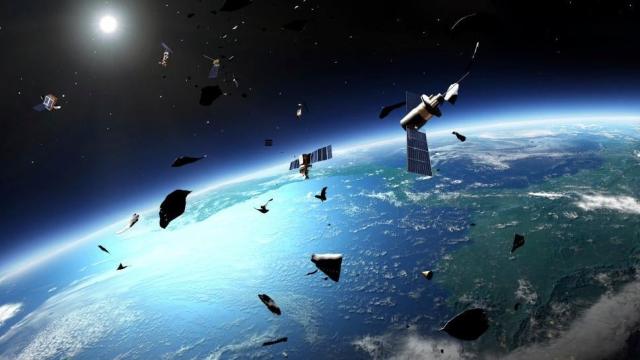A mysterious Russian satellite that launched to space in 2014 has experienced its second breakup event. The cause of Kosmos-2499’s demise is unknown, and we may never find out the truth, given the satellite’s veiled and suspicious history.
The U.S. Space Force’s 18th Space Defence Squadron confirmed the breakup of Kosmos-2499 in a February 6 tweet. The squadron is now tracking 85 new pieces of debris associated with the event, which happened at 10:57 p.m. on January 3, 2023. At an estimated altitude of 1,170 kilometres, it will take 100 years or more for the pieces to fall back to Earth, adding to the growing clutter in orbit.
#18SDS has confirmed the breakup of COSMOS 2499 (#39765, 2014-028E) – occurred Jan 4, 2023 at appx 0357 UTC. Tracking 85 associated pieces at est 1169 km altitude – analysis ongoing. #spacedebris #space @SpaceTrackOrg @US_SpaceCom @ussfspoc
— 18th Space Defense Squadron (@18thSDS) February 7, 2023
That Kosmos-2499 collided with another object, such as a small piece of space debris or micrometeorite, is a distinct possibility, but the satellite’s prior behaviour in space and suspected purpose offers a more plausible explanation: it simply exploded. And, strangely, it would not be the first time, as Kosmos-2499 experienced its first breakup event on October 22, 2021, which likewise produced trackable debris, as Jonathan McDowell, an astronomer at the Harvard-Smithsonian Centre for Astrophysics, explained in an email.
The satellite’s story began in May 2014, when it launched to space alongside three Russian Rodnik-type satellites, according to RussianSpaceWeb reporter Anatoly Zak. The satellite wasn’t included in the rocket’s payload manifest, so when it inexplicably appeared alongside the three Rodnik satellites, U.S. trackers presumed it to be a fragment and was designated as such: space debris Object 2014-028E.
But the object began to perform a series of complex orbital manoeuvres, strongly suggesting the presence of an undisclosed fourth satellite. By October 2014, the U.S. reclassified the object as being payload and not debris. What’s more, the U.S. military “was now rechecking orbital parameters of the mysterious satellite three or four times a day,” Zak writes. The following year, Kosmos-2499 performed a rendezvous with its own Briz-KM rocket stage, and it continued to perform manoeuvres up until 2017.
McDowell said the satellite seems related to Russia’s Nivelir project, “most probably a project to build small satellites designed to inspect other satellites in space,” according to an article from The Space Review published in May 2019. Russia has launched four of these satellites to date, two of which rendezvoused with their respective rocket stages.
Five years ago, a senior U.S. military official described the behaviour of these satellites as “inconsistent with anything seen before from on-orbit inspection or space situational awareness capabilities” and alluded to the possibility that the satellites were related to a program for developing space weapons, that is, satellites capable of disabling other satellites in orbit. Years earlier, Roscosmos chief Oleg Ostapenko denied similar accusations, saying the devices were not “killer satellites,” while refraining from explaining their purpose, according to RussianSpaceWeb.
As to why Kosmos-2499 has now seemingly exploded on two occasions, McDowell suspects it’s tied to the liquid propulsion stage that allowed the satellite to perform multiple orbital changes, specifically the Fakel K50-10.6 propulsion system powered by hydrazine monopropellant. “There may be some who suggest it carried an explosive warhead for [anti-satellite] use, but I find that extremely unlikely,” he said, adding that it also carried the RS-47 amateur radio payload.
Ground observations suggested that Kosmos-2499 measured about 0.3 metres in length, but McDowell said those observations aren’t very reliable and that the satellite might be closer to around 3 feet (1 metre) in length. That tracks in my mind, given the amount of debris spotted by U.S. trackers.
And yes, satellites can spontaneously explode while in space, a recent example being the Russian SOZ ullage motor, which exploded on April 15, 2022. Those motors date back to the Cold War, whereas modern spacecraft are designed to avoid this problem. Well, the Kosmos-2499 satellite being an apparent exception.
More: Russian Motor Spontaneously Explodes in Orbit, Creating Debris Cloud
